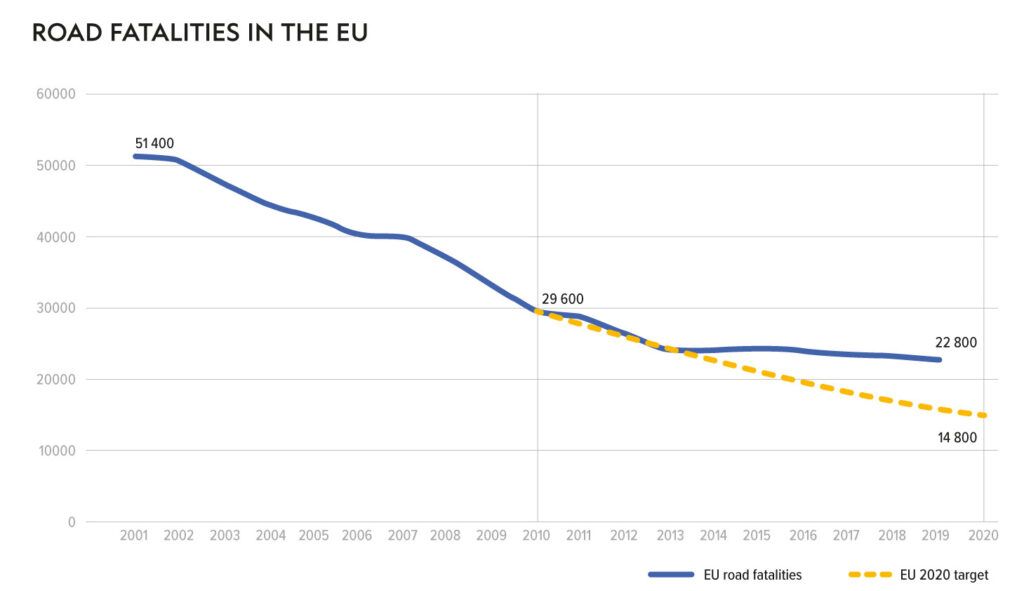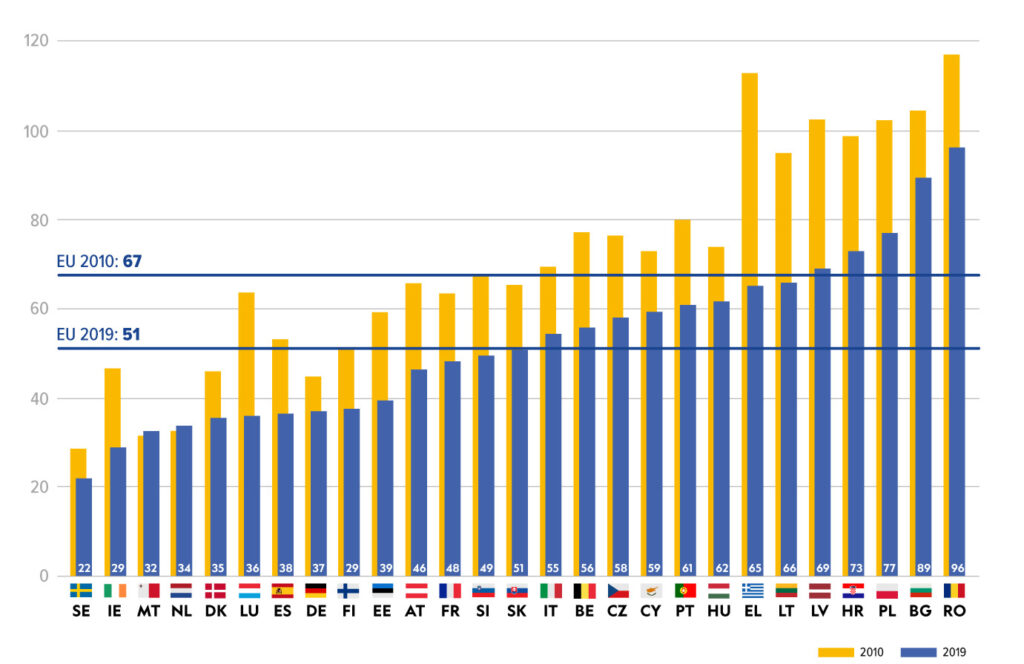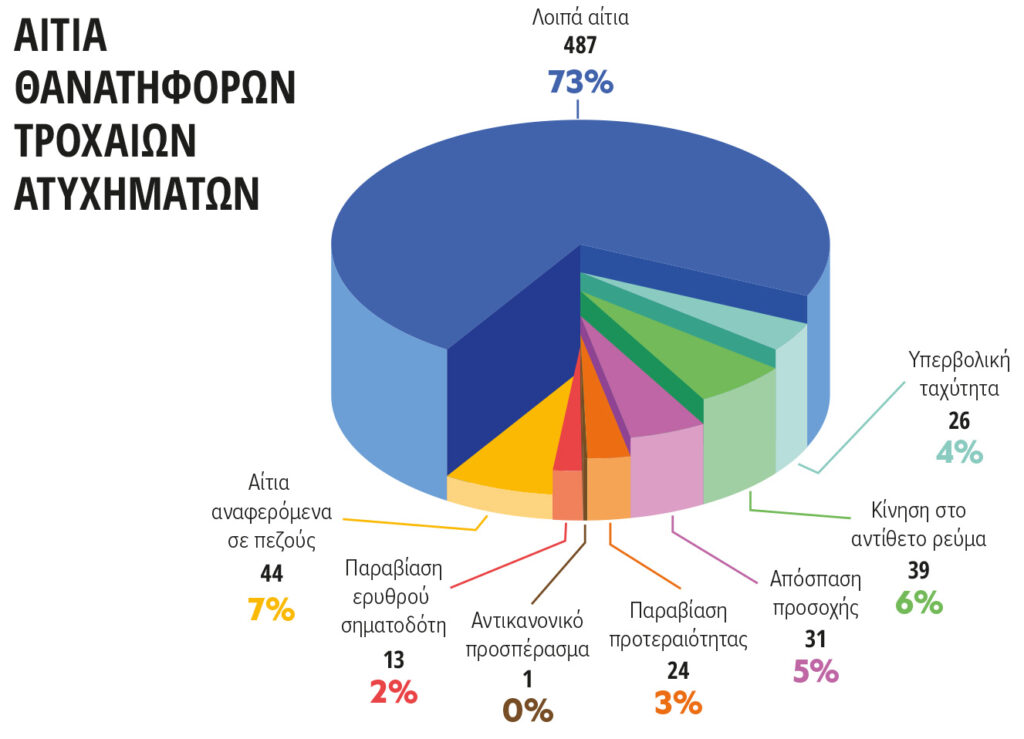Road Safety, a matter of life

Road safety is a multifactorial issue that requires constant vigilance at all levels. It really is a matter of life and death: according to the World Health Organisation, road accidents are now the most common cause of death for children and young people between 5 and 29 worldwide. The next steps, therefore, that the EU is taking towards achieving the “vision zero losses” is an urgent task that concerns us all.
Road Safety: how is the situation internationally?
1.35 million people die each year worldwide due to road accidents, while 20 to 50 million people are injured. More than half of the deaths and injuries on the road network involve vulnerable road users, such as pedestrians, cyclists, motorcyclists and their passengers.
These deaths and injuries bring insurmountable human suffering and social cost and incur unbearable financial burdens for the victims and their families. In addition, road accident injuries have a serious impact on national economies, with a cost of about 3% of the states’ annual GDP. These are indicators and data presented by the World Health Organisation and invite us to intensify efforts to reduce road accidents, both at the level of international organisations and at the domestic level, with targeting and proposals in this direction.
Road Safety: how is the situation at EU level?
Compared to the situation internationally, Europe is doing relatively well thanks to the decisive action taken at EU, national, regional and local level. In particular, from 2001 to 2010, the number of road deaths in the European Union decreased by 43%. However, according to data presented on the official website of the European Commission, in recent years there has been a stagnation in the number of fatalities, and as a result the target to halve the number of road fatalities from 2010 to 2020 has not been reached, as shown in the diagram below.

Source: CARE (EU road accidents database)
Road Safety: how is the situation in Greece?
Despite the improvement that our country has shown in recent years in terms of reducing fatal road accidents, we still have a long way to go, as Greece remains among the EU Member States that hold a high position in terms of road fatality rate.

Source: CARE (EU road accidents database)
More specifically, despite the country’s impressive progress in road safety since 2010, with the fastest declining trend in the EU (45%), the number of road fatalities in Greece is much higher than the European average: 65 deaths per million residents in 2019.
But what are the main causes? According to the data of the Hellenic Police, the largest percentage of road accidents is related to causes attributed to drivers, while speeding, driving in the opposite direction, distraction and violation of priority and traffic lights are counted separately as causes. For 2019, the situation is presented in the graph below.

In addition, according to the Hellenic Statistical Authority (ELSTAT), in 2019, 11% of road fatalities (drivers, passengers or pedestrians) belonged to the age group of 18-24 years, while 7.3% of the fatal road accidents occurred on motorways of the country.
Road Safety & Children
The European Road Safety Observatory (ERSO) of the EU, in its report in 2018 focusing on child safety, the highest responsibility and a compass for all our actions, emphasises that the benefit of using a seat belt as well as the proper use of the child seat, is huge.
Presenting a research by Chaloupka-Risser (2014), it points out that a collision at 50 km/h without a child safety seat can be fatal for children. It is worth noting that rearward-facing systems have been shown to reduce injuries between 90% and 95%, while forward-facing systems have been shown to have an injury reducing effect of approximately 60%. The use of a child seat reduces the risk of death in infants by approximately 71%, while in young children by 54%.
Also, according to the report of the European Road Safety Observatory, road accidents are the second most common cause of death in children aged 5-14 years (WHO, 2008). In Europe, in 2015, 654 children under the age of 15 lost their lives in road accidents. The number of children who die each year in car accidents fell by about 50% between 2006 and 2015 in the countries of the European Union (ERSO Traffic Safety Basic Fact on Children, 2017). And while the number of deaths in children has gradually decreased in proportion to the total deaths, which may indicate that safety has improved dramatically, on the other hand, the declining birth rate in Europe and the fact that children are more often accompanied on the road or move less frequently unattended, perhaps suggest a different explanation.
Ways to reduce accidents
The road ahead of us to achieve the EU vision of zero losses is uphill, and requires a top-down approach and vice versa. In particular, in the context of EU road safety policy 2021-2030, concrete steps are being taken, including:
- Infrastructure – safe roads and roadsides. It is estimated that road infrastructure and road surroundings are a contributing factor in more than 30% of crashes. Well-designed and properly maintained roads can reduce the probability of road traffic accidents, while “forgiving” roads (roads laid out on Safe System principles e.g. with median safety barriers to ensure that driving errors do not need to have serious consequences) can reduce the severity of accidents that do happen. Systematic risk mapping and safety rating, meaning proactive assessments in addition to the more traditional reactive analysis of high accident concentration sites (“accident hot spots”), provide useful tools.
- Safe vehicles. Innovations in vehicle technology can help both mitigate the severity of crashes and reduce the likelihood of crashes through on the one hand passive safety features such as safety belts, airbags, and general crashworthiness of vehicles that protect occupants when a collision is inevitable, and on the other hand active safety features, such as Advanced Emergency Braking, Intelligent Speed Assistance, Stability Control and Lane Departure Warning that may prevent accidents from happening altogether.
- Safe road use. Speed, driving without alcohol and drugs, undistracted driving, safety belt and child restraint use, use of protective equipment – the human factor in road safety plays a crucial role. Establishing specific driving license requirements, targeted education and raising public awareness supported by strong compliance and law enforcement regimes are crucial issues.
- Fast and effective emergency response. As pointed out in the EU Road Safety Policy 2021-2030, about 50% of deaths from road traffic collisions occur within minutes at the scene or in transit and before arrival at hospital. Effective post-crash care, including fast transport to the correct facility by qualified personnel, reduces the consequences of injury.
- Important horizontal issues affecting all the above are law enforcement and training.
Attica Tollway is the ambassador of the Road Safety message

“Attiki Odos SA” and “Attikes Diadromes SA” from the very beginning act as ambassadors of the Road Safety message, seeking to play a key role in promoting road culture. In order to contribute to the reduction of road accidents, both Companies take every care for the protection of the drivers and the employees who drive and work on Attica Tollway, ensuring the perfect maintenance of the infrastructure and the management of the traffic. In the same context, “Attiki Odos SA” and “Attikes Diadromes SA” develop a series of initiatives and educational actions to raise public awareness on road safety issues, taking into account all data at national, European and global level on the causes of accidents, vulnerable groups, etc.
At the same time, as the global trend in road safety moves towards the development of driver warning systems or even automated driving, with the human factor remaining the main cause of road accidents, the Companies also participate in research programs which focus on the timely information of drivers or automated driving, aiming at reducing accidents resulting from human carelessness or negligence.
For useful information and tips on road safety issues, you can refer to the relevant section, here.

